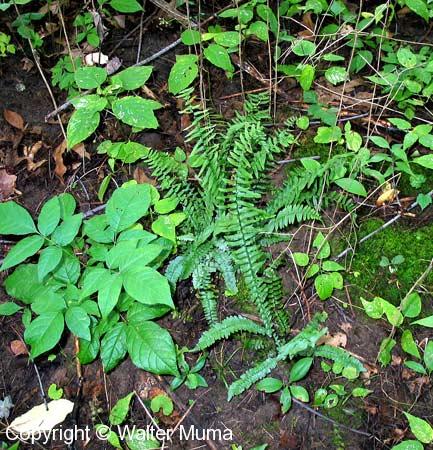
|
 |
Ebony Spleenwort, growing in its favourite habitat - woods, and edge of woods. |
|
 |
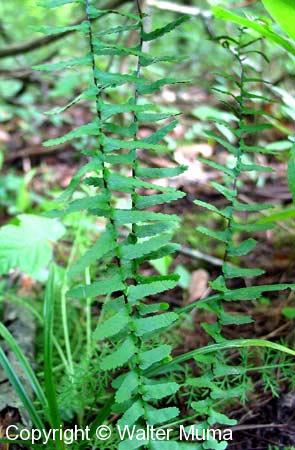
|
 |
This fern usually grows fairly straight upward. |
|
 |
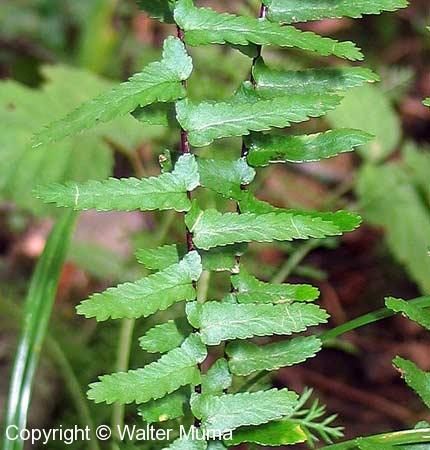
|
 |
The leaflets are sometimes "frilly", as shown here, and sometimes smooth-edged (entire). |
|
 |
|
|
 |
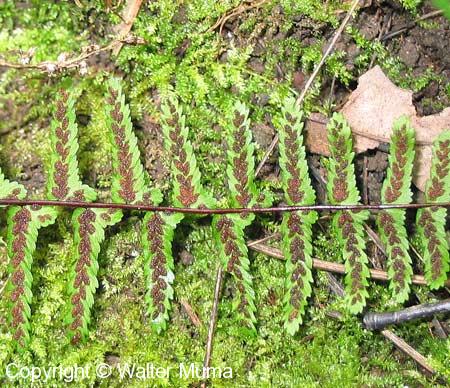
|
 |
Underside of frond, showing arrangement of sori. |
|
 |
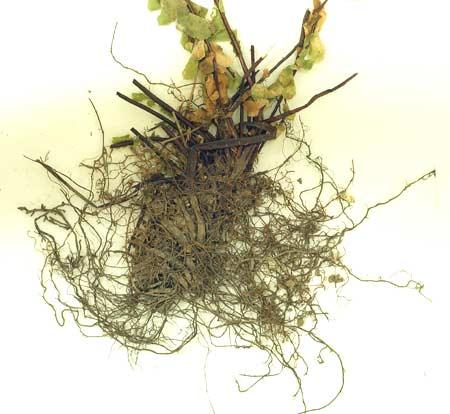
|
 |
Herbarium specimen showing the roots.
(Royal Botanical Gardens Herbarium,Burlington,Ontario). |
|
 |
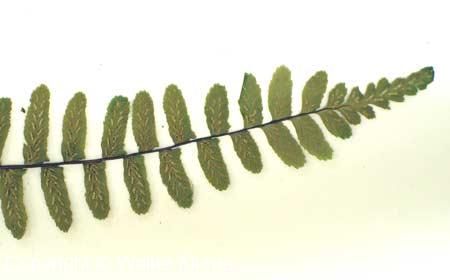
|
 |
Herbarium specimen showing the underside of frond, showing sori.
(Royal Botanical Gardens Herbarium,Burlington,Ontario). |
|
 |
|
|  |
 |
|
| |